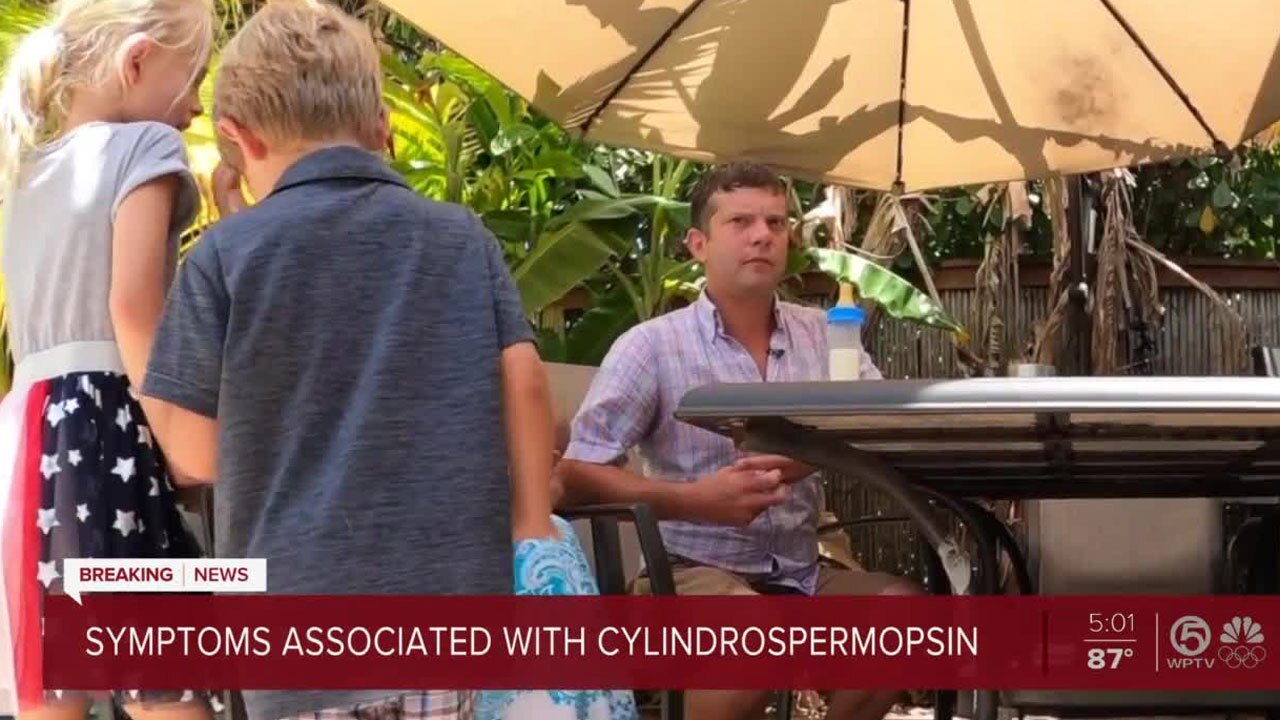WEST PALM BEACH, Fla. — Many members of the public want to know the health effects they could face if they are in the vulnerable groups affected by the toxin found in West Palm Beach’s drinking water.
What are the symptoms associated with cylindrospermopsin and how soon could you experience a reaction?
Ryan and Amanda Braun were worried their 5-year-old child would get dehydrated after he started vomiting on Wednesday of last week.
"We were like, 'Just drink water.' We didn't know we were poisoning our kid," Ryan Braun said.
RELATED: Water toxicology specialist questions delaying water advisory
The couple didn't take their son to the doctor on the holiday weekend and don't know for sure if the toxin found in West Palm Beach's water supply is to blame. But soon afterward, their son, Tommy and his older sister got sick.

"Well, she's 7, and she threw up, I don't even know, nonstop for 30 hours," said Ryan Braun. "That was our Memorial Day weekend, and they knew, and it could have prevented it."
The family was upset after finding out about the water advisory by text message from the city Saturday afternoon. Amanda immediately stopped nursing her 2-month-old child.
"Pumping and then watching it all go down the drain is just the most heartbreaking thing," Amanda Braun said.
The Brauns said they didn't take their kids to the doctor because once they stopped consuming the water, symptoms subsided a few days later.
City officials said levels of the toxin linked to blue-green algae were above .7 micrograms per liter.
Florida Atlantic University professor of nursing Dr. Shirley Gordon said it depends on each person when symptoms will subside.

"As health care providers, we provide supportive care, so if someone is presenting with a fever we treat the fever. If they have nausea and vomiting and diarrhea, we treat those symptoms," Gordon said.
Gordon also said because this specific toxin is less common in drinking water than the microcystin toxins typically produced from blue-green algae blooms, there also isn't a set diagnostic test for it.
"There are some specialty labs that can test for the presence of the toxins in urine. We are working with the CDC right now to develop a methodology to test for it in human blood, so again as we are developing these methodologies they will become more available to local clinicians," Gordon said.
She said the most important thing for parents to do if their child's symptoms escalate to needing emergency medical attention is to disclose the possible exposure to the toxin to health care providers.
"The biggest concern, as I said before, for young children is the development of dehydration," Gordon said.
Could other types of exposure to the toxin lead to symptoms?
Gordon said there is only one study she is aware of that looked at dermal absorption through the skin, and this particular toxin is not absorbed through the skin.
Gordon said FAU is currently working with the CDC to develop a methodology to test for these types of toxins in human blood.
The university is also currently conducted a study looking at the aerosolization of microcystin toxins and working with the Florida Health Department to answer what kind of impact people would face from acute exposure and long term exposure to microcystin,
They are currently looking for participants for the study outlined in the flyer below:




